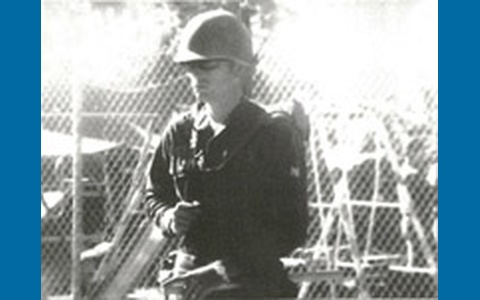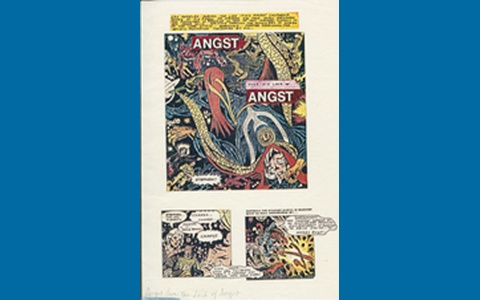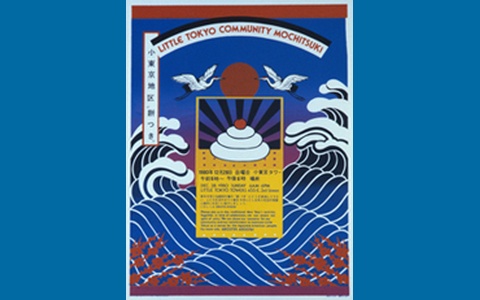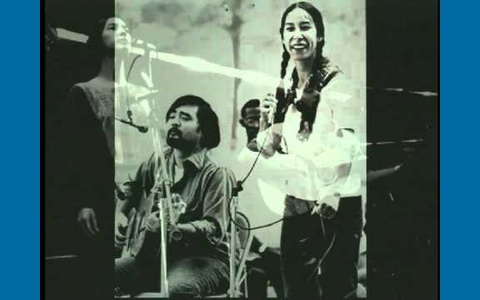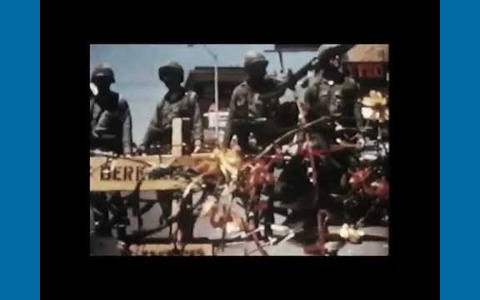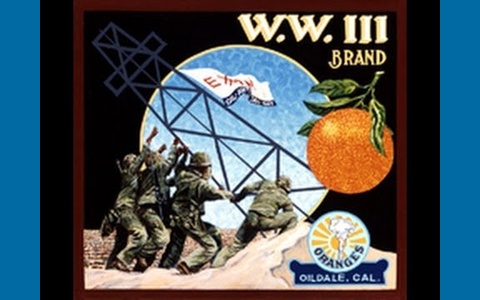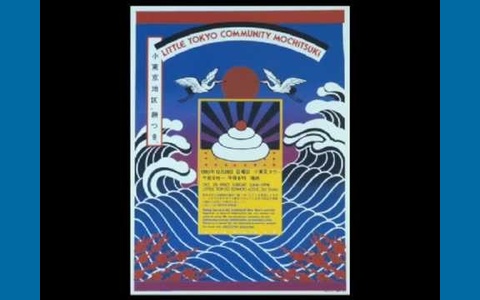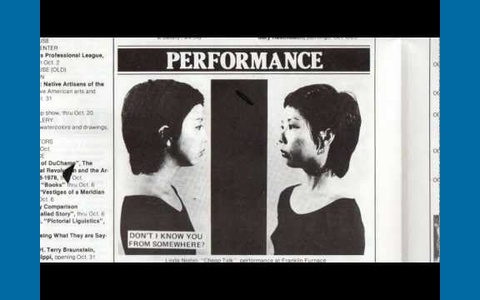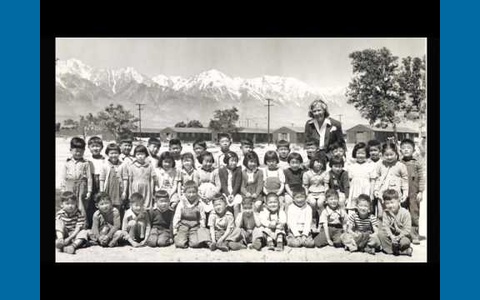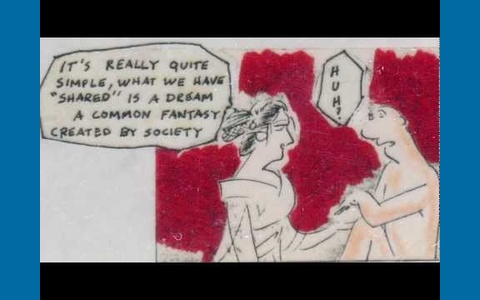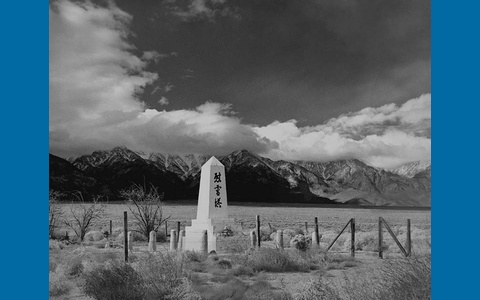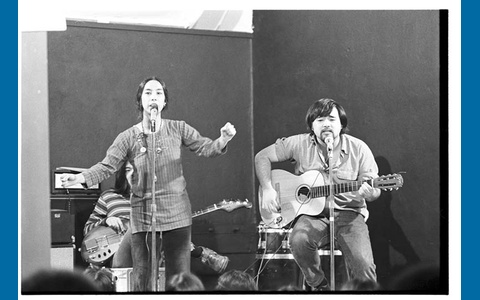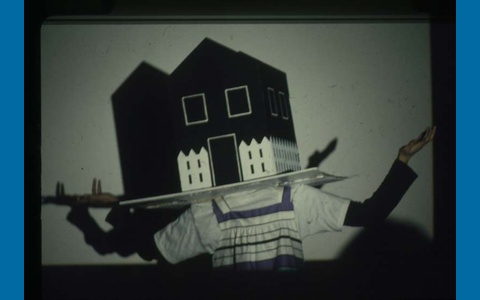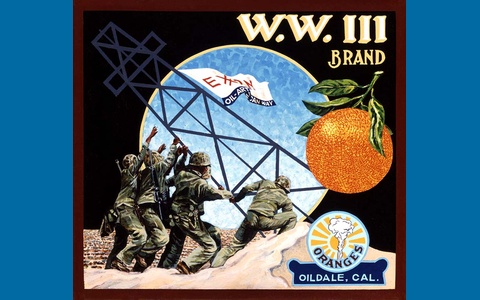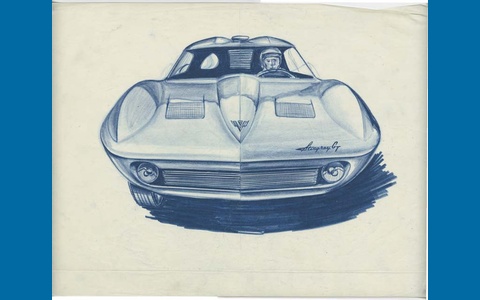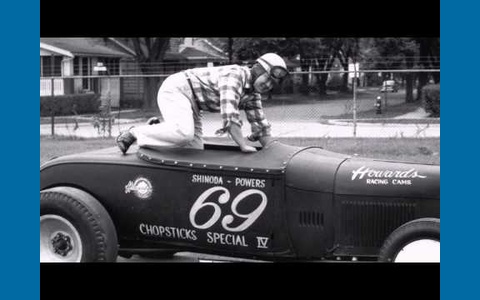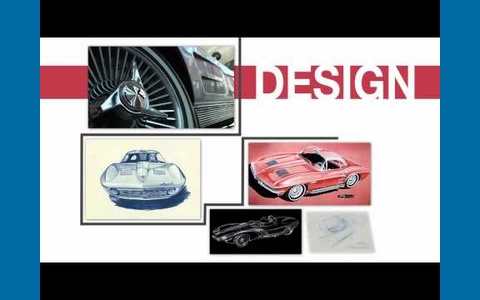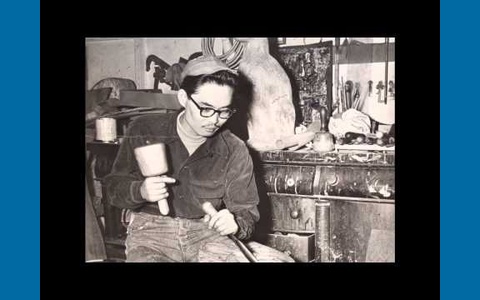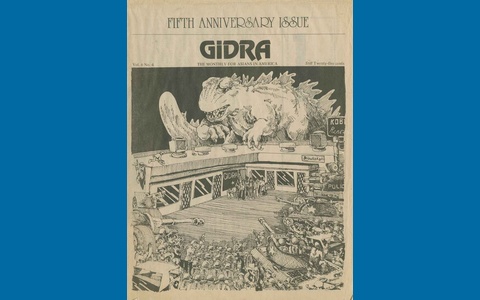Drawing the Line: Japanese American Art, Design & Activism in Post-War Los Angeles
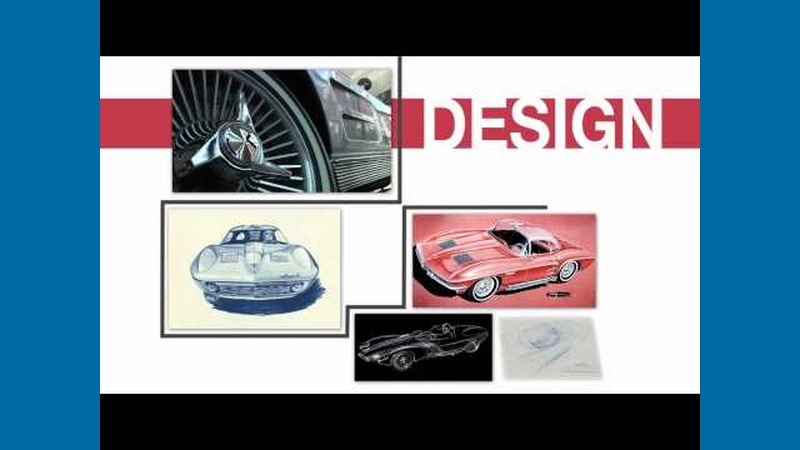
Drawing the Line: Japanese American Art, Design & Activism in Post-War Los Angeles
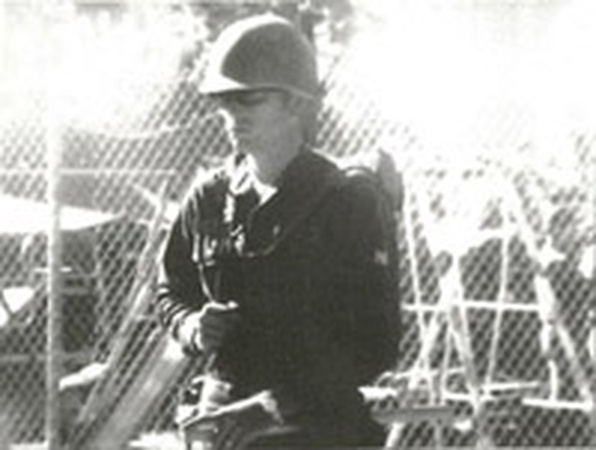
Norman Yonemoto (Second Campaign film still)
Norman Yonemoto (b. 1946) has always been fascinated with the way that techniques of filmmaking can be used to affect an emotional response. He received an MFA in directing from the American Film Institute, and an undergraduate degree at the University of California, Los Angeles, where he used film to explore the turbulence of the late 1960s.
Second Campaign was made in 1969 when Yonemoto and Nicolai Ursin traveled to Berkeley to document the events around the struggle for People's Park. While the sympathies of the film lie with the protestors, the film is notable for being more prosaic and less didactic in its approach to the events, ultimately emphasizing the collective sense of celebration.
He would go on to work with his brother Bruce on a series of videos playing with the genre of television soap operas in the late 1970s and early 1980s and a series of landmark video-based installations throughout the 1980s and 1990s.
Film still from “Second Campaign” (1969) by Norman Yonemoto and Nicholas Ursin. Courtesy of Norman Yonemoto.
--
Second Campaign film still
Film still from “Second Campaign” (1969) by Norman Yonemoto and Nicholas Ursin. Courtesy of Norman Yonemoto.
Included in the Drawing the Line: Japanese American Art, Design & Activism exhibition on view at the Japanese American National Museum from October 15, 2011 through February 19, 2012.
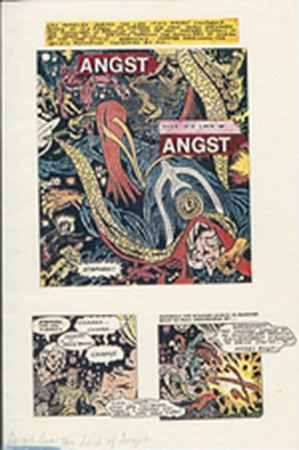
Bruce Yonemoto (Angst over the Lack of Angst (1977) by Bruce Yonemoto)
Bruce Yonemoto (b. 1949) has explored the relationship between mass media and the politics of identity in his work for many years. In his first classes in Ethnic Studies as a student at University of California, Berkeley, Yonemoto discovered an interest in his Japanese heritage. Following graduation, he spent three years studying in Japan and became a fan of manga (Japanese comics).
The series of prints on display in the exhibition were created after his return to Los Angeles and employs altered manga and American comic books. With a wry sense of humor, Yonemoto replaces the original texts, harnessing the sensibility and attitude of the cartoon images to explore conflicts between identity and creativity and his position in the world as an artist. For more information, visit www.alexandergray.com/artists/bruce-yonemoto.
Angst over the Lack of Angst (1977) by Bruce Yonemoto. First print from a suite of three prints. Courtesy of Bruce Yonemoto.
--
Angst over the Lack of Angst (1977) by Bruce Yonemoto
Angst over the Lack of Angst (1977) by Bruce Yonemoto. First print from a suite of three prints. Courtesy of Bruce Yonemoto.
Included in the Drawing the Line: Japanese American Art, Design & Activism exhibition on view at the Japanese American National Museum from October 15, 2011 through February 19, 2012.
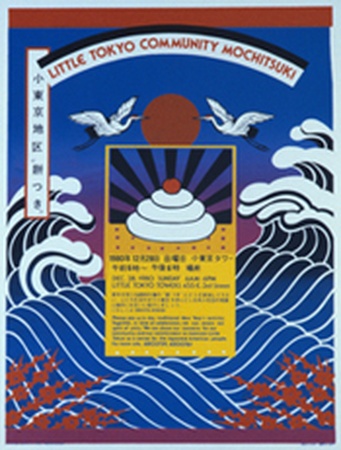
Qris Yamashita (1980 Little Tokyo Mochitsuki poster)
Qris Yamashita (b.1951) is a graphic designer and artist whose work has formed a visual identity for the Japanese American and Asian Pacific American community. Her posters, books, flyers, and T-shirts have been crucial in promoting a sense of community and solidarity. She successfully synthesizes traditional Japanese and contemporary Western images in her work, consciously developing a uniquely Japanese American sensibility and perspective. A lifelong Angeleno, Yamashita has been an active member of the Kinnara Taiko and Senshin Buddhist Temple, supporting the development of a Japanese American Buddhist culture.
1980 Little Tokyo Mochitsuki poster designed by Qris Yamashita. Screenprint. Courtesy of Qris Yamashita.
--
1980 Little Tokyo Mochitsuki poster
1980 Little Tokyo Mochitsuki poster designed by Qris Yamashita. Screenprint. Courtesy of Qris Yamashita.
Included in the Drawing the Line: Japanese American Art, Design & Activism exhibition on view at the Japanese American National Museum from October 15, 2011 through February 19, 2012.
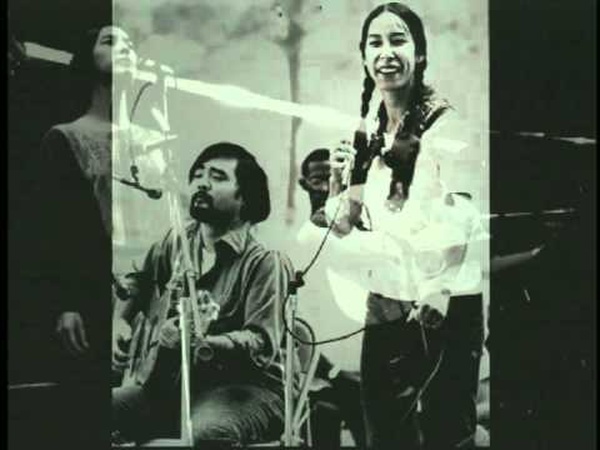
Nobuko Miyamoto video (Drawing the Line - Nobuko Miyamoto )
Video of Nobuko Miyamoto talking about how she started dancing from a young age, became a dancer and performer in Broadway musicals, and how meeting Yuri Kochiyama led to her involvement in the Asian American Movement and of being in service to the community through her art.
--
Drawing the Line - Nobuko Miyamoto
Video about musician & dancer Nobuko Miyamoto created by the Watase Media Arts Center at the Japanese American National Museum for the Drawing the Line: Japanese American Art, Design & Activism exhibition on view from October 15, 2011 through February 19, 2012. For more information, visit http://www.janm.org/exhibits/drawingtheline.
Nobuko Miyamoto (b. 1939) is a dancer and musician who found her political and artistic voice in the Asian American movement. JoAnne Nobuko Miyamoto began her career as a dancer on Broadway in Flower Drum Song and in films like West Side Story and The King and I. After working with director Antonello Branca on Seize the Time, a radical docufiction film about the Black Panthers, and meeting activist Yuri Kochiyama, Miyamoto became deeply involved in Asian American activism. She teamed up with musician Chris Ijima, traveling the country as a part of "Chris and Jo," playing music for Asian American audiences. They recorded the album "Grain of Sand" with Charlie Chin in 1973. She settled in Los Angeles and continued to perform music with Benny Yee in a group called Warriors of the Rainbow. In the late 1970s, Miyamoto and Yee collaborated on the first Asian American musical called Chop Suey, which followed the story of a Chinese American girl's struggle to find her voice. This was the first project of Miyamoto's multi-ethnic performing arts organization Great Leap, which was founded to promote Asian American performing arts. For more information about Great Leap, visit their website: www.greatleap.org
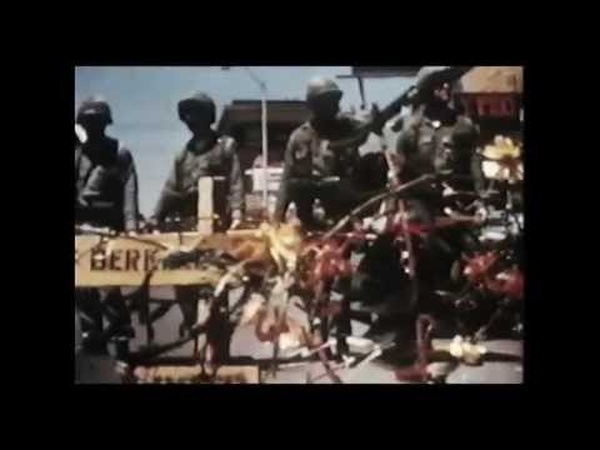
Norman Yonemoto video (Drawing the Line - Norman Yonemoto )
Norman Yonemoto (brother of Bruce Yonemoto) talks about how his mother talked about their World War II experience and the influence of those stories on him, and the making the Second Campaign film.
--
Drawing the Line - Norman Yonemoto
Video about filmmaker and visual artist Norman Yonemoto created by the Watase Media Arts Center at the Japanese American National Museum for the Drawing the Line: Japanese American Art, Design & Activism exhibition on view from October 15, 2011 through February 19, 2012. For more information, visit http://www.janm.org/exhibits/drawingtheline .
Norman Yonemoto (b. 1946) has always been fascinated with the way that techniques of filmmaking can be used to affect an emotional response. He received an MFA in directing from the American Film Institute, and an undergraduate degree at the University of California, Los Angeles, where he used film to explore the turbulence of the late 1960s. Second Campaign was made in 1969 when Yonemoto and Nicolai Ursin traveled to Berkeley to document the events around the struggle for People's Park. While the sympathies of the film lie with the protestors, the film is notable for being more prosaic and less didactic in its approach to the events, ultimately emphasizing the collective sense of celebration. He would go on to work with his brother Bruce on a series of videos playing with the genre of television soap operas in the late 1970s and early 1980s and a series of landmark video-based installations throughout the 1980s and 1990s.
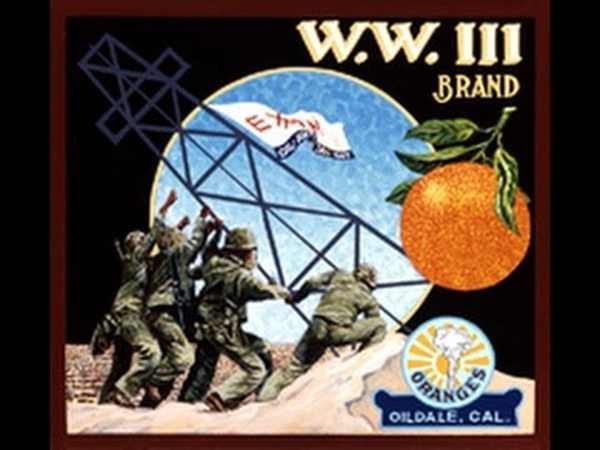
Ben Sakoguchi video (Drawing the Line video - Ben Sakoguchi )
In this video, Ben Sakoguchi talks about his parents and how the World War II camp experience affected them, his inspirations for his orange crate label paintings, and the way he works.
--
Drawing the Line video - Ben Sakoguchi
Video about painter & printmaker Ben Sakoguchi created by the Watase Media Arts Center at the Japanese American National Museum for the "Drawing the Line: Japanese American Art, Design & Activism" exhibition on view from October 15, 2011 through February 19, 2012. For more information, visit www.janm.org/exhibits/drawingtheline.
Ben Sakoguchi (b. 1938) is a painter and printmaker who has lived in the Los Angeles area his entire life. After studying painting in the 1960s at the University of California, Los Angeles, he developed a distinctive style that is rooted in pairing a narrative painting tradition with a pop culture vocabulary. He is best known for his long running "Orange Crate Label" series, using the classic crate label format to explore diverse subject matter and to combine them in a way that allows for both sharp critique and wry humor. His work is deeply and politically engaged, and he takes a deep delight in the craft and beauty of painting itself. Sakoguchi was a professor at Pasadena City College for nearly 35 years. Visit his website at www.bensakoguchi.com.
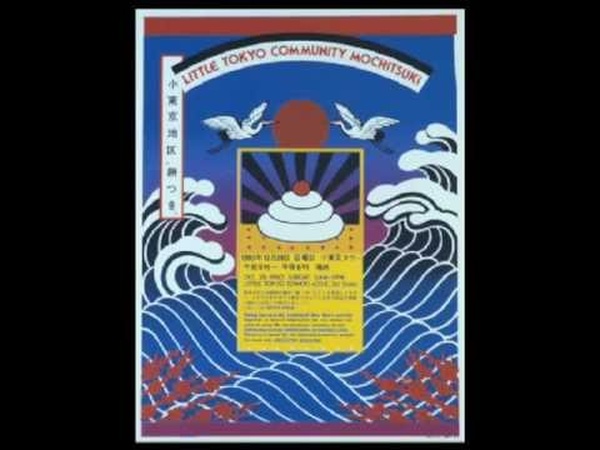
Qris Yamashita video (Drawing the Line - Qris Yamashita )
Qris Yamashita talks about how she has used her skill as a graphic designer and artist to support and promote the Japanese American community designing posters for mochitsuki, obon, and other events.
--
Drawing the Line - Qris Yamashita
Video about graphic designer Qris Yamashita created by the Watase Media Arts Center at the Japanese American National Museum for the Drawing the Line: Japanese American Art, Design & Activism exhibition on view from October 15, 2011 through February 19, 2012. For more information, visit http://www.janm.org/exhibits/drawingtheline.
Qris Yamashita (b.1951) is a graphic designer and artist whose work has formed a visual identity for the Japanese American and Asian Pacific American community. Her posters, books, flyers, and T-shirts have been crucial in promoting a sense of community and solidarity. She successfully synthesizes traditional Japanese and contemporary Western images in her work, consciously developing a uniquely Japanese American sensibility and perspective. A lifelong Angeleno, Yamashita has been an active member of the Kinnara Taiko and Senshin Buddhist Temple, supporting the development of a Japanese American Buddhist culture.
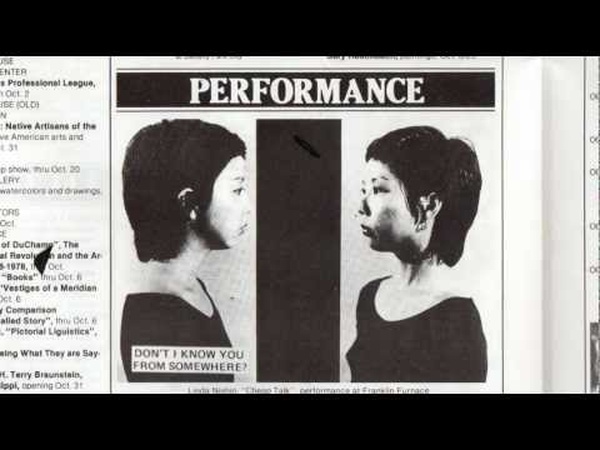
Linda Nishio video (Drawing the Line - Linda Nishio )
Video of Linda Nishio talking about how she developed as a feminist performance artist, including the piece Kikoemasuka which makes a statement that not all Japanese Americans are the same, and how her performances were like self-portraits.
--
Drawing the Line - Linda Nishio
Video about performance artist Linda Nishio created by the Watase Media Arts Center at the Japanese American National Museum for the Drawing the Line: Japanese American Art, Design & Activism exhibition on view from October 15, 2011 through February 19, 2012. For more information, visit http://www.janm.org/exhibits/drawingtheline.
Linda Nishio (b. 1952) grew up in Los Angeles and attended the University of Kansas and Rutgers University, where she developed a multimedia art practice that involved photography, video and film, bookmaking and live performance. Her work centers around the definition and redefinition of self—exploring the ways that we see ourselves, the psychology of that vision, and the way that others see us. The work displayed in this exhibition focuses on several moments of her creative production shortly after her return to Los Angeles in the late 1970s.
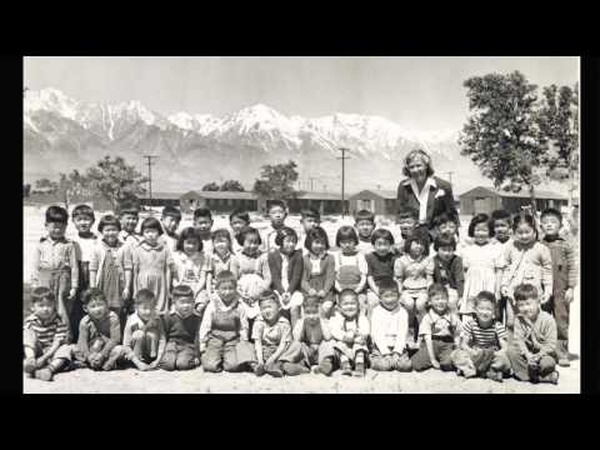
Robert A. Nakamura video (Drawing the Line - Robert Nakamura )
In this video about photographer & filmmaker Robert A. Nakamura, he talks about how he was inspired by Gidra magazine to become active in the Asian American Movement, and then became involved in filmmaking, creating the film Manzanar in 1972, and helping to found Visual Communications.
--
Drawing the Line - Robert Nakamura
Video about photographer & filmmaker Robert A. Nakamura created by the Watase Media Arts Center at the Japanese American National Museum for the "Drawing the Line: Japanese American Art, Design & Activism" exhibition on view from October 15, 2011 through February 19, 2012. For more information, visit http://www.janm.org/exhibits/drawingtheline.
Robert A. Nakamura (b. 1937) is a filmmaker, teacher, and community activist. In 1970, he co-founded Visual Communications, now the oldest Asian American media center in the U.S. His landmark films include Manzanar (1972), an experimental documentary that revisited childhood memories of the World War II incarceration, and Hito Hata: Raise the Banner (1980), the first Asian American feature film.
After attending Art Center College of Design in Pasadena, he had a successful career as a photojournalist and studio photographer; his work was published in Life, Look, and Cosmopolitan magazines among other publications. In the early 1960s, he worked in the office of Charles and Ray Eames in Venice, documenting their work and assisting on films and installations. After a trip to Japan for inspiration, he returned to Los Angeles in the late 1960s, discovered the Asian American movement—in part through the magazine Gidra—and began using his talents to further its political and cultural goals. Nakamura would later found both the University of California, Los Angeles (UCLA) Center for Ethnocommunications and the Watase Media Arts Center of the Japanese American National Museum.
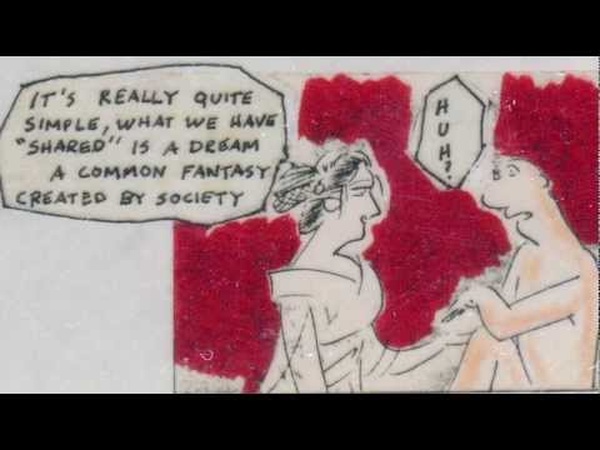
Bruce Yonemoto video (Drawing the Line - Bruce Yonemoto )
Bruce Yonemoto talks about his parents and early life in a farming community, studying at UC Berkeley in the late 1960s where he was involved in the start of Asian Studies classes and research, studying in Japan for 3 years, getting his MFA at Otis College in Los Angeles, and the influence of comic books and manga on his art.
--
Drawing the Line - Bruce Yonemoto
Video about visual artist Bruce Yonemoto created by the Watase Media Arts Center at the Japanese American National Museum for the Drawing the Line: Japanese American Art, Design & Activism exhibition on view from October 15, 2011 through February 19, 2012. For more information, visit http://www.janm.org/exhibits/drawingtheline.
Bruce Yonemoto (b. 1949) has explored the relationship between mass media and the politics of identity in his work for many years. In his first classes in Ethnic Studies as a student at University of California, Berkeley, Yonemoto discovered an interest in his Japanese heritage. Following graduation, he spent three years studying in Japan and became a fan of manga (Japanese comics). The series of prints on display were created after his return to Los Angeles and employs altered manga and American comic books. With a wry sense of humor, Yonemoto replaces the original texts, harnessing the sensibility and attitude of the cartoon images to explore conflicts between identity and creativity and his position in the world as an artist. For more information, visit www.alexandergray.com/artists/bruce-yonemoto.
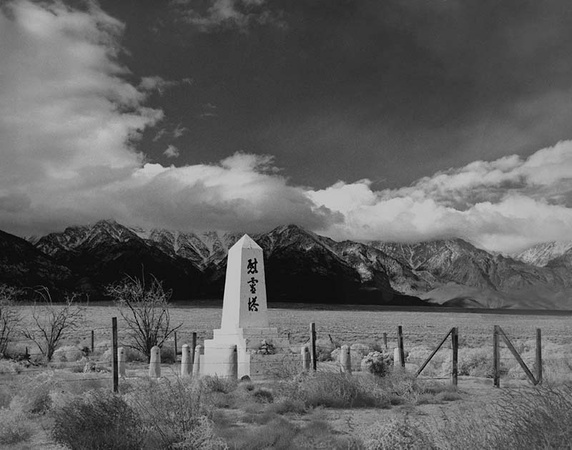
Robert A. Nakamura (Cemetery Monument at Manzanar by Robert A. Nakamura)
Robert A. Nakamura (b. 1937) is a filmmaker, teacher, and community activist. In 1970, he co-founded Visual Communications, now the oldest Asian American media center in the U.S. His landmark films include Manzanar (1972), an experimental documentary that revisited childhood memories of the World War II incarceration, and Hito Hata: Raise the Banner (1980), the first Asian American feature film.
After attending Art Center College of Design in Pasadena, he had a successful career as a photojournalist and studio photographer; his work was published in Life, Look, andCosmopolitan magazines among other publications. In the early 1960s, he worked in the office of Charles and Ray Eames in Venice, documenting their work and assisting on films and installations. After a trip to Japan for inspiration, he returned to Los Angeles in the late 1960s, discovered the Asian American movement—in part through the magazine Gidra—and began using his talents to further its political and cultural goals. Nakamura would later found both the University of California, Los Angeles (UCLA) Center for Ethnocommunications and the Watase Media Arts Center of the Japanese American National Museum.
Cemetery Monument at Manzanar, California, One of Ten Concentration Camps in the U.S. That Incarcerated Over 120,000 Americans of Japanese Descent During WWII (2009), Courtesy of Robert A. Nakamura. © Robert A. Nakamura
--
Cemetery Monument at Manzanar by Robert A. Nakamura
Cemetery Monument at Manzanar, California, One of Ten Concentration Camps in the U.S. That Incarcerated Over 120,000 Americans of Japanese Descent During WWII (2009), Courtesy of Robert A. Nakamura. © Robert A. Nakamura.
Included in the Drawing the Line: Japanese American Art, Design & Activism exhibition on view at the Japanese American National Museum from October 15, 2011 through February 19, 2012.
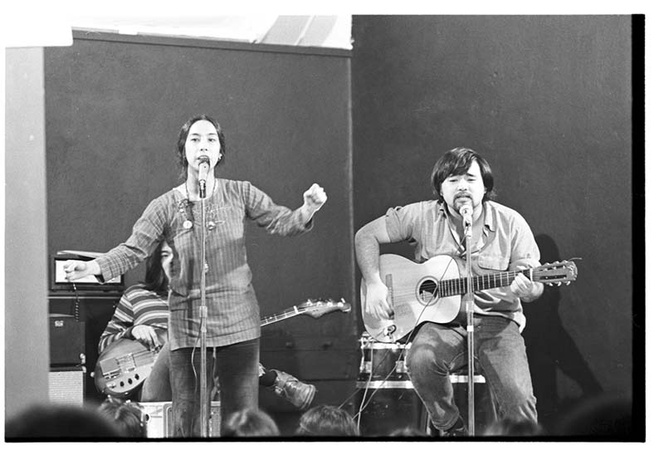
Nobuko Miyamoto (Nobuko Miyamoto and Chris Iijima)
Nobuko Miyamoto (b. 1939) is a dancer and musician who found her political and artistic voice in the Asian American movement. JoAnne Nobuko Miyamoto began her career as a dancer on Broadway in Flower Drum Song and in films like West Side Story and The King and I.
After working with director Antonello Branca on Seize the Time, a radical docufiction film about the Black Panthers, and meeting activist Yuri Kochiyama, Miyamoto became deeply involved in Asian American activism. She teamed up with musician Chris Ijima, traveling the country as a part of "Chris and Jo," playing music for Asian American audiences. They recorded the album "Grain of Sand" with Charlie Chin in 1973.
She settled in Los Angeles and continued to perform music with Benny Yee in a group called Warriors of the Rainbow. In the late 1970s, Miyamoto and Yee collaborated on the first Asian American musical called Chop Suey, which followed the story of a Chinese American girl's struggle to find her voice. This was the first project of Miyamoto's multi-ethnic performing arts organization Great Leap, which was founded to promote Asian American performing arts. For more information about Great Leap, visit their website:www.greatleap.org
Photo: Nobuko Miyamoto and Chris Iijima. Courtesy of Photographic Collections, Visual Communications. © Visual Communications.
--
Nobuko Miyamoto and Chris Iijima
Nobuko Miyamoto and Chris Iijima. Courtesy of Photographic Collections, Visual Communications. © Visual Communications.
Included in the Drawing the Line: Japanese American Art, Design & Activism exhibition on view at the Japanese American National Museum from October 15, 2011 through February 19, 2012.
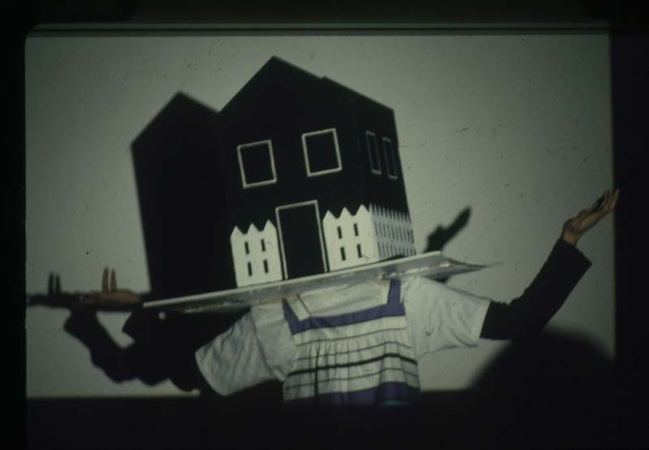
Linda Nishio (“Ghost in the Machine” (1981), Linda Nishio)
Linda Nishio (b. 1952) grew up in Los Angeles and attended the University of Kansas and Rutgers University, where she developed a multimedia art practice that involved photography, video and film, bookmaking and live performance. Her work centers around the definition and redefinition of self—exploring the ways that we see ourselves, the psychology of that vision, and the way that others see us. The work displayed in this exhibition focuses on several moments of her creative production shortly after her return to Los Angeles in the late 1970s.
Performance still from “Ghost in the Machine” (1981), Linda Nishio. Photo by Elizabeth Ennis. Courtesy Linda Nishio.
--
“Ghost in the Machine” (1981), Linda Nishio
Performance still from “Ghost in the Machine” (1981), Linda Nishio.
Included in the Drawing the Line: Japanese American Art, Design & Activism exhibition on view at the Japanese American National Museum from October 15, 2011 through February 19, 2012.
Photo by Elizabeth Ennis. Courtesy Linda Nishio.
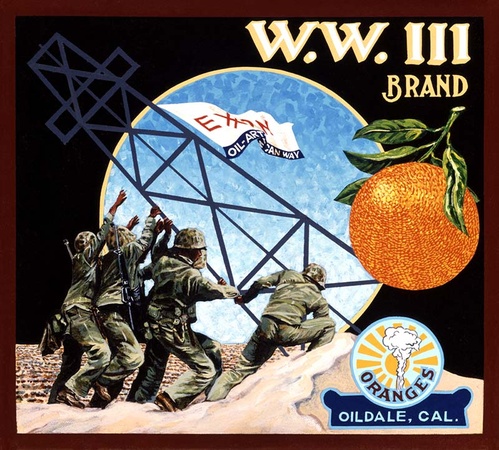
Ben Sakoguchi (Orange Crate Label Series 1974-81: WWIII Brand (1974-81) by Ben Sakoguchi)
Ben Sakoguchi (b. 1938) is a painter and printmaker who has lived in the Los Angeles area his entire life. After studying painting in the 1960s at the University of California, Los Angeles, he developed a distinctive style that is rooted in pairing a narrative painting tradition with a pop culture vocabulary.
He is best known for his long running "Orange Crate Label" series, using the classic crate label format to explore diverse subject matter and to combine them in a way that allows for both sharp critique and wry humor. His work is deeply and politically engaged, and he takes a deep delight in the craft and beauty of painting itself. Sakoguchi was a professor at Pasadena City College for nearly 35 years. Visit his website at www.bensakoguchi.com.
Orange Crate Label Series 1974-81: WWIII Brand (1974-81), Ben Sakoguchi. Acrylic on canvas 10 x 11 in. © Ben Sakoguchi. Collection of Marcia and Ed Nunnery.
--
Orange Crate Label Series 1974-81: WWIII Brand (1974-81) by Ben Sakoguchi
Orange Crate Label Series 1974-81: WWIII Brand (1974-81), Ben Sakoguchi. Acrylic on canvas 10 x 11 in. © Ben Sakoguchi. Collection of Marcia and Ed Nunnery.
Included in the Drawing the Line: Japanese American Art, Design & Activism exhibition on view at the Japanese American National Museum from October 15, 2011 through February 19, 2012.
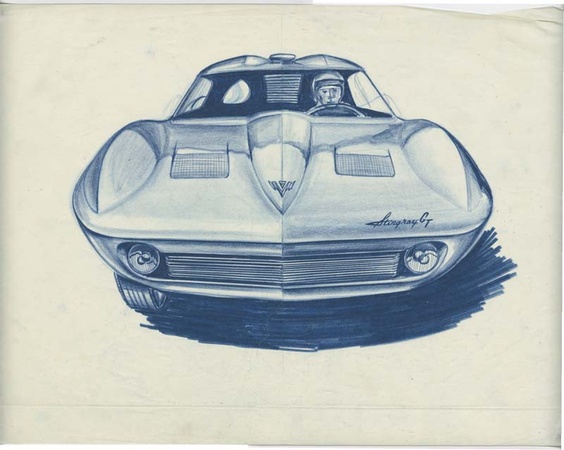
Larry Shinoda (Untitled drawing (Stingray) by Larry Shinoda)
Larry Shinoda (1930-1997) was born and raised in Northeast Los Angeles. His training in industrial design at Art Center College of Design, Los Angeles and his love of drag racing propelled him into a long career with the design departments of car companies such as Packard, Ford, Chevrolet, and GM. He later founded his own design company that created Roger Penske’s race trailers, motor homes, and even the logo for the Goodyear Blimp. He is responsible for a remarkable series of important car designs: the 1963 Corvette Sting Ray; the Mako Shark I and II; the Corvair Super Spyder; the Monza GT and Monza SS; and the Boss 302 and 429 Mustang, among many others.
Pencil on paper. Gift of the Shinoda Family, Japanese American National Museum (2003.124.3).
--
Untitled drawing (Stingray) by Larry Shinoda
Untitled drawing (Stingray), Larry Shinoda. Pencil on paper.
Included in the Drawing the Line: Japanese American Art, Design & Activism exhibition on view at the Japanese American National Museum from October 15, 2011 through February 19, 2012.
Gift of the Shinoda Family, Japanese American National Museum (2003.124.3).
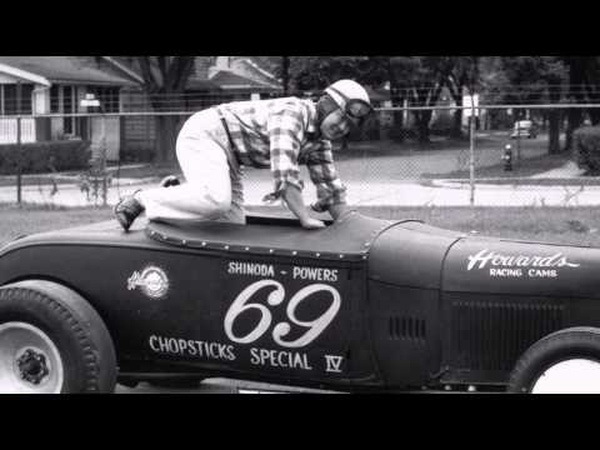
Larry Shinoda video (Drawing the Line video - Larry Shinoda)
In this video from the Drawing the Line exhibition, Larry Shinoda's sister and friend talks about his early family history, including at Manzanar during World War II, and his early love of cars that led to his incredible success as an automobile designer.
--
Drawing the Line video - Larry Shinoda
Video about automobile designer Larry Shinoda created by the Watase Media Arts Center at the Japanese American National Museum for the Drawing the Line: Japanese American Art, Design & Activism exhibition on view from October 15, 2011 through February 19, 2012. For more information, visit http://www.janm.org/exhibits/drawingtheline.
Larry Shinoda (1930-1997) was born and raised in Northeast Los Angeles. His training in industrial design at Art Center College of Design, Los Angeles and his love of drag racing propelled him into a long career with the design departments of car companies such as Packard, Ford, Chevrolet, and GM. He later founded his own design company that created Roger Penske's race trailers, motor homes, and even the logo for the Goodyear Blimp. He is responsible for a remarkable series of important car designs: the 1963 Corvette Sting Ray; the Mako Shark I and II; the Corvair Super Spyder; the Monza GT and Monza SS; and the Boss 302 and 429 Mustang, among many others.
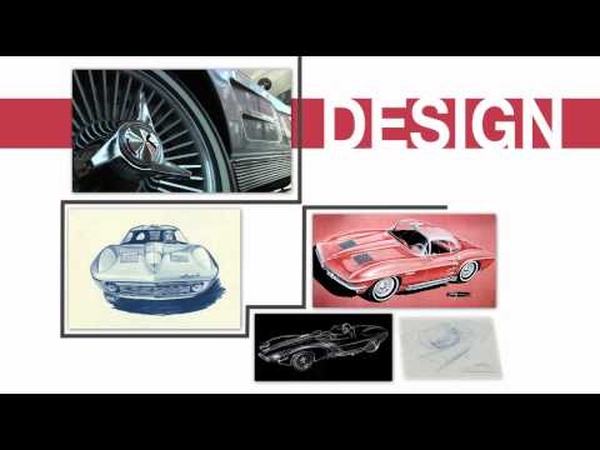
Drawing the Line: Japanese American Art, Design & Activism (Drawing the Line: Japanese American Art, Design & Activism promo video)
Here's a promo video for Drawing the Line: Japanese American Art, Design & Activism.
--
Drawing the Line: Japanese American Art, Design & Activism promo video
Short promo video produced for the Drawing the Line: Japanese American Art, Design & Activism exhibition on view at the Japanese American National Museum from October 15, 2011 through February 19, 2012. For more information, visit janm.org/exhibits/drawingtheline.
PSA video was created by Frank Watase Media Arts Center at the Japanese American National Museum.
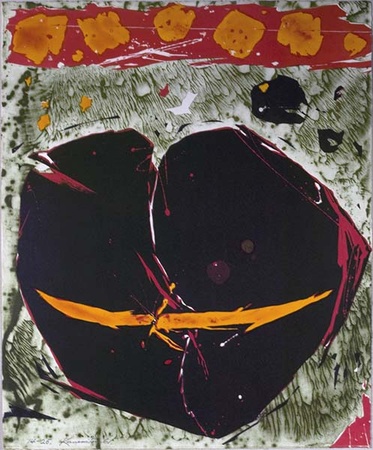
Matsumi “Mike” Kanemitsu (Oxnard Madame (1961) by Matsumi “Mike” Kanemitsu)
Matsumi "Mike" Kanemitsu (1922-1992) was born in Utah but raised by his grandparents in Japan until he was 16, when he returned to the U.S. He spent five years in the military during World War II, serving in Europe and spending time studying with artists in France after his discharge. He then returned to New York where he joined a circle of painters who included Mark Rothko and Franz Kline. Kanemitsu developed a style that integrated his training in Japanese ink painting with modernist abstraction. After a decade in New York, he came to Los Angeles in 1961 on the invitation of June Wayne at the Tamarind workshop. His loose painting style translated beautifully onto the litho stone and he discovered a great love of printmaking. Captivated by Southern California's atmosphere and the printmaking opportunities he found here, he took a teaching position at Chouinard in 1965, and remained in Los Angeles for the remainder of his life.
Oxnard Madame (1961), Matsumi “Mike” Kanemitsu. Lithography (paper and ink) 15 x 18 in. Gift of Margot H. Leavin, Japanese American National Museum (99.288.2).
--
Oxnard Madame (1961) by Matsumi “Mike” Kanemitsu
Oxnard Madame (1961), Matsumi “Mike” Kanemitsu. Lithography (paper and ink) 15 x 18 in.
Included in the Drawing the Line: Japanese American Art, Design & Activism exhibition on view at the Japanese American National Museum from October 15, 2011 through February 19, 2012.
Gift of Margot H. Leavin, Japanese American National Museum (99.288.2).
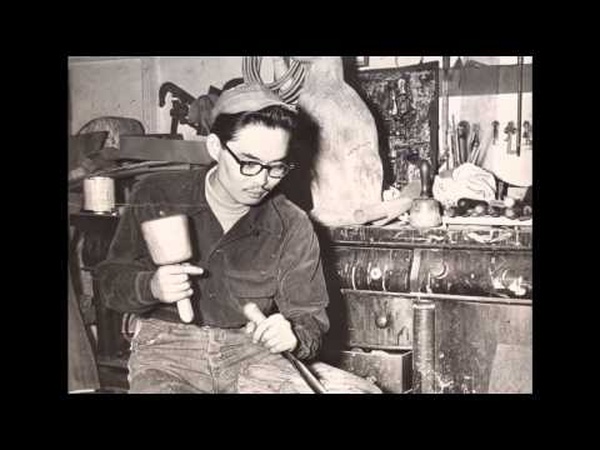
Mike Kanemitsu video (Drawing the Line - Matsumi “Mike” Kanemitsu)
In this video, Nancy Uyemura talks about artist Matsumi “Mike” Kanemitsu's life as an artist and his artwork, and his role as an advocate and mentor to other artists in the local Japanese American community in Los Angeles.
--
Drawing the Line - Matsumi “Mike” Kanemitsu
Video about painter & printmaker Matsumi "Mike" Kanemitsu created by the Watase Media Arts Center at the Japanese American National Museum for the Drawing the Line: Japanese American Art, Design & Activism exhibition on view from October 15, 2011 through February 19, 2012. For more information, visit http://www.janm.org/exhibits/drawingtheline
Matsumi "Mike" Kanemitsu (1922-1992) was born in Utah but raised by his grandparents in Japan until he was 16, when he returned to the U.S. He spent five years in the military during World War II, serving in Europe and spending time studying with artists in France after his discharge. He then returned to New York where he joined a circle of painters who included Mark Rothko and Franz Kline. Kanemitsu developed a style that integrated his training in Japanese ink painting with modernist abstraction. After a decade in New York, he came to Los Angeles in 1961 on the invitation of June Wayne at the Tamarind workshop. His loose painting style translated beautifully onto the litho stone and he discovered a great love of printmaking. Captivated by Southern California's atmosphere and the printmaking opportunities he found here, he took a teaching position at Chouinard in 1965, and remained in Los Angeles for the remainder of his life.
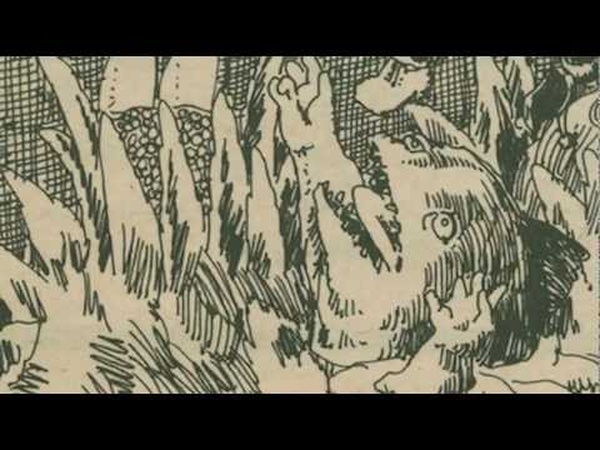
GIDRA video (Drawing the Line video - GIDRA )
In this video, former Gidra staff Mike Murase, Evelyn Yoshimura, and Doug Aihara talk about Gidra magazine—how it started, how they worked, and the types of stories they covered.
--
Drawing the Line video - GIDRA
Video about the seminal Asian American magazine GIDRA created by the Watase Media Arts Center at the Japanese American National Museum for the "Drawing the Line: Japanese American Art, Design & Activism" exhibition on view from October 15, 2011 through February 19, 2012. For more information, visit http://www.janm.org/exhibits/drawingtheline.
"Gidra" was a monthly publication that called itself the "voice of the Asian American movement." Founded by University of California, Los Angeles (UCLA) students in April 1969, the magazine took a radically progressive political position, providing information about the movement not found elsewhere in the mainstream media. The magazine eventually moved off campus, operating out of a series of offices in the Crenshaw area until its last issue went to press in April 1974.
The magazine's sixty issues offered news from the third world struggle perspective—aligning the Asian American movement not only with domestic empowerment movements like the Black Power, Chicano, and Native American movements but also the international struggles of oppressed peoples in Africa, Southeast Asia, and Latin America. "Gidra" addressed issues like drug abuse in the Asian American community, news about the Vietnam War and the anti-war movement, prison conditions, and the redevelopment of Little Tokyo, among other issues. Art, especially poetry and drawing, were integrated into every issue of the magazine; such creative expressions were crucial to articulating a newly forming Asian American identity and were intertwined with the political goals of the movement.
The magazine was edited by a changing, non-hierarchical collective that included Mike Murase, Doug Aihara, Evelyn Yoshimura, Steve Tatsukawa, and Bruce Iwasaki at its core, along with a roster of talented graphic designers and artists that included Alan Takemoto, Dean Toji, David Monkawa, and Glenn Iwasaki.
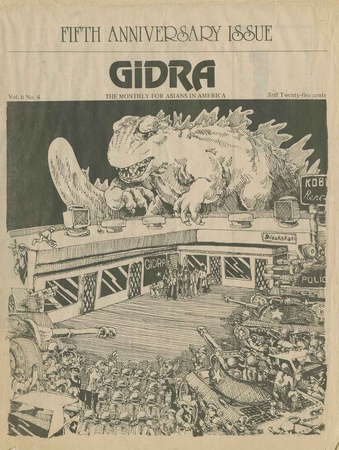
GIDRA magazine (GIDRA 1974 - Cover Page)
Gidra was a monthly publication that called itself the "voice of the Asian American movement." Founded by University of California, Los Angeles (UCLA) students in April 1969, the magazine took a radically progressive political position, providing information about the movement not found elsewhere in the mainstream media. The magazine eventually moved off campus, operating out of a series of offices in the Crenshaw area until its last issue went to press in April 1974.
The magazine's sixty issues offered news from the third world struggle perspective—aligning the Asian American movement not only with domestic empowerment movements like the Black Power, Chicano, and Native American movements but also the international struggles of oppressed peoples in Africa, Southeast Asia, and Latin America. "Gidra" addressed issues like drug abuse in the Asian American community, news about the Vietnam War and the anti-war movement, prison conditions, and the redevelopment of Little Tokyo, among other issues. Art, especially poetry and drawing, were integrated into every issue of the magazine; such creative expressions were crucial to articulating a newly forming Asian American identity and were intertwined with the political goals of the movement.
The magazine was edited by a changing, non-hierarchical collective that included Mike Murase, Doug Aihara, Evelyn Yoshimura, Steve Tatsukawa, and Bruce Iwasaki at its core, along with a roster of talented graphic designers and artists that included Alan Takemoto, Dean Toji, David Monkawa, and Glenn Iwasaki.
The following issues are available online:
--
GIDRA 1974 - Cover Page
Cover scanned from the final issue of GIDRA magazine (April 1974).
Gidra was a monthly publication that called itself the “voice of the Asian American movement.” Founded by University of California, Los Angeles (UCLA) students in April 1969, the magazine took a radically progressive political position, providing information about the movement not found elsewhere in the mainstream media. The magazine eventually moved off campus, operating out of a series of offices in the Crenshaw area until its last issue went to press in April 1974.
Included in the Drawing the Line: Japanese American Art, Design & Activism exhibition on view at the Japanese American National Museum from October 15, 2011 through February 19, 2012.
Gift of Janice Diane Tanaka, Japanese American National Museum (90.8.1)
The exhibition, Drawing the Line: Japanese American Art, Design & Activism in Post-War Los Angeles, is on view at the Japanese American National Museum from October 15, 2011 through February 19, 2012 in Los Angeles, CA. Drawing the Line explores the cultural resonance of several key Japanese American artists in the decades following the Second World War.
By situating the work of a diverse group of creative figures in the context of resettlement and a subsequent shifting sense of cultural identity, the exhibition brings to light a complex story that weaves art and community as part of the same fabric. “While this story is specific to the unique circumstances of Japanese Americans from the 1950s to the early 1980s,” explained Curator Kris Kuramitsu, “it also resonates and overlaps with other social and cultural movements, like the Civil Rights, Anti-Vietnam War, and Women’s Movements. This broad view of activism and art provides a nuanced reading of politics in the creative work of artists across multiple generations.”
The exhibition includes artists such as painter Matsumi “Mike” Kanemitsu; musician and dancer Nobuko Miyamoto, founder of Great Leap; photographer and filmmaker Robert A. Nakamura; performance artist Linda Nishio; painter and printmaker Ben Sakoguchi; automobile designer Larry Shinoda; the seminal Asian American magazine Gidra; graphic designer Qris Yamashita; filmmaker and visual artist Norman Yonemoto; and visual artist Bruce Yonemoto. The exhibition gives a glimpse of the changing ways that Japanese Americans created visions of and for themselves and their communities.
This album presents video interviews with the artists, their families, and friends featured in the exhibition. Produced by the Museum’s Watase Media Arts Center, the videos are also available for sale on a DVD through the Museum Store.
This exhibition is part of the project Pacific Standard Time: Art in LA 1945 – 1980, an unprecedented collaboration initiated through grants from the Getty Foundation of more than fifty cultural institutions across Southern California, which are coming together to tell the story of the birth of the L.A. art scene. Pacific Standard Time, which is taking place over six months beginning October 2011, is an initiative of the Getty. The presenting sponsor is Bank of America.
The new Nikkei Album!
We’re excited to share our redesigned Nikkei Album. It’s a work-in-progress, so please have patience as we add more features and functionality. It will be an exciting tool for our community to easily share photos, videos, and text! Learn MoreNew Site Design
See exciting new changes to Discover Nikkei. Find out what’s new and what’s coming soon! Learn More
Discover Nikkei Updates



See exciting new changes to Discover Nikkei. Find out what’s new and what’s coming soon!


